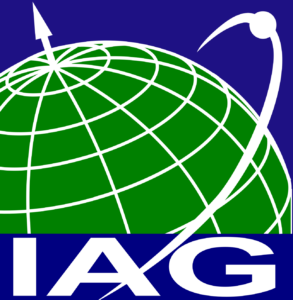Earth Rotation
Earth rotation describes the spin of our planet around its axis, which defines universal time (UT) and the orientation of the Earth in space. This rotation is not constant but varies slightly due to complex mass redistributions within the atmosphere, oceans, hydrosphere, and solid Earth. These variations are quantified through Earth Orientation Parameters (EOP), which link the celestial (CRF) and terrestrial reference frames (TRF) and include polar motion, UT1–UTC (Length of Day changes), and precession–nutation. EOPs are continuously monitored using precise geodetic techniques such as VLBI (Very Long Baseline Interferometry), GNSS (Global Navigation Satellite Systems), and SLR (Satellite Laser Ranging) to ensure accurate navigation, satellite tracking, and Earth system studies.
More Info: https://geodesy.science/item/earth-orientation-parameter/



